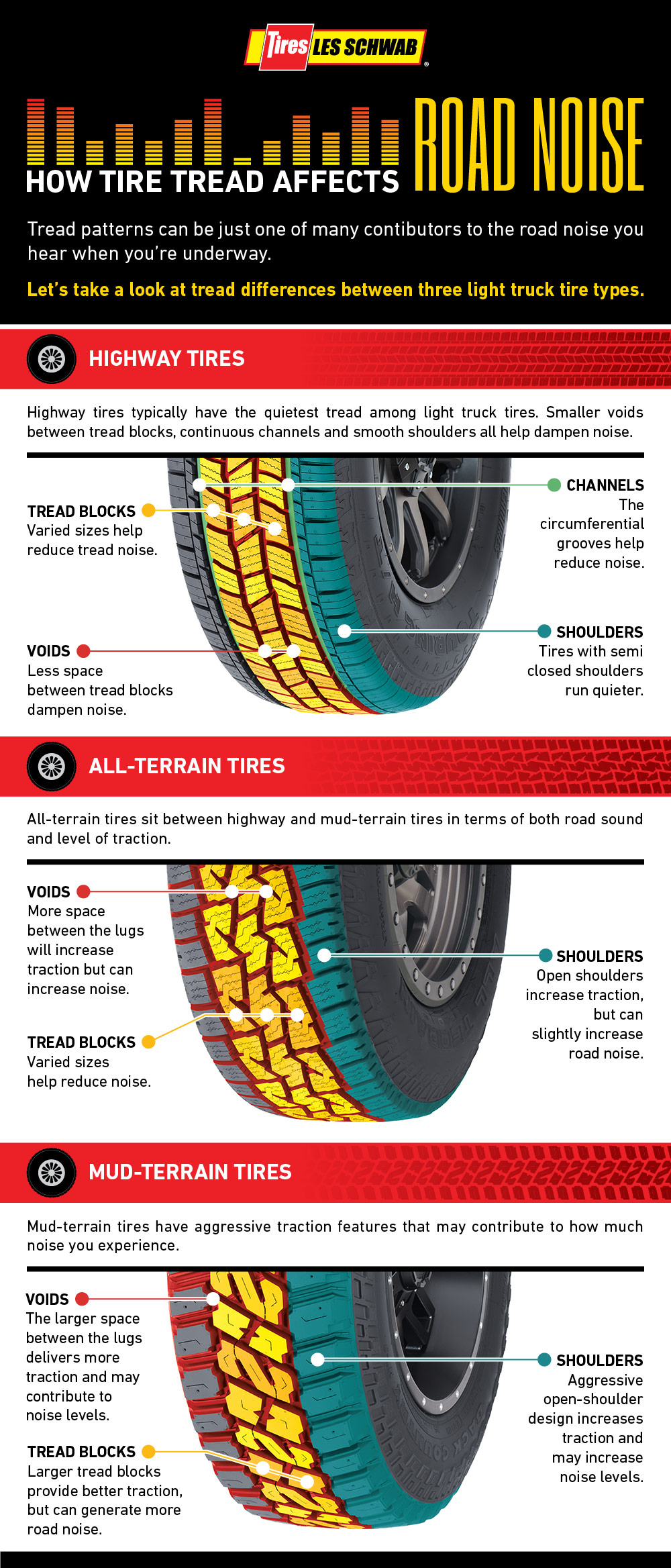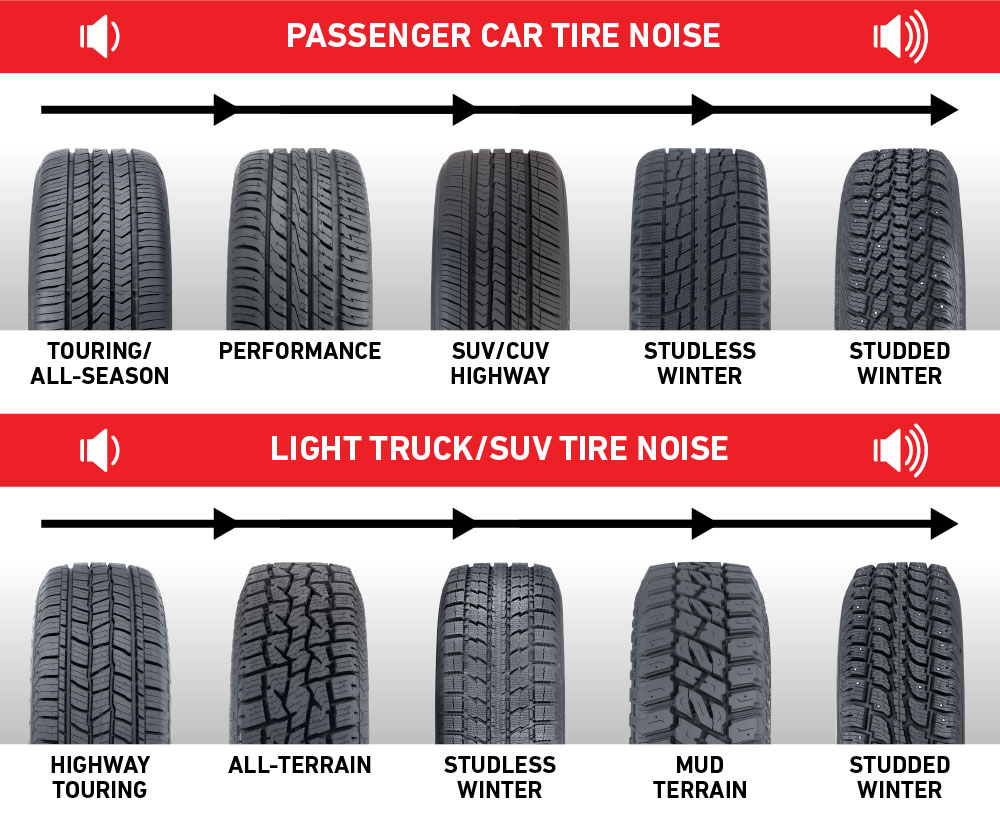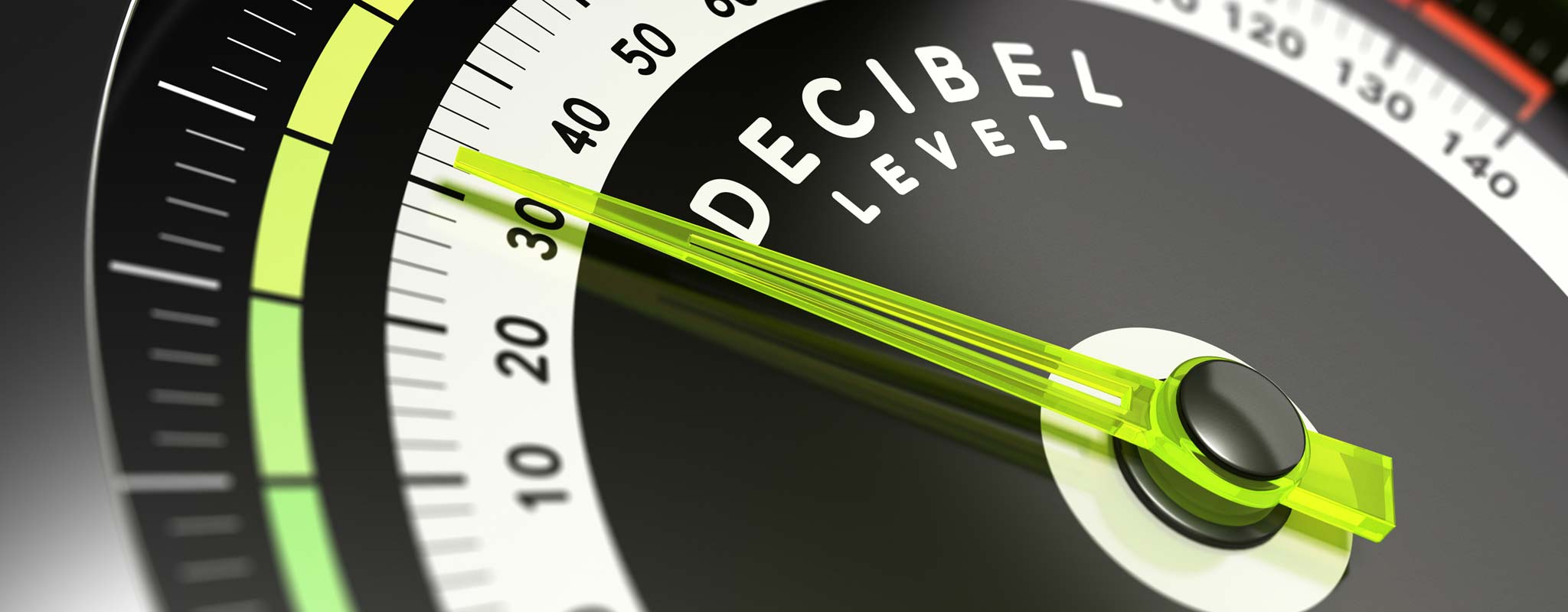Want Quiet Tires? Look for These Features
If you put a high priority on a quiet ride, your tire selection is important. Tread patterns, wheel size and traction elements can all affect tire noise.
Tire Features That Cut Road Noise
Tire noise reduction is a science. Designers have figured out how to tune tread patterns to change the harmonics and disrupt air flow. There are sizing and rating considerations, too. Here’s what to look for to get quieter tires:
- Continuous, circumferential ribs with straight grooves in between.
- Varied tread block shapes that create a multiple pitch pattern.
- Smaller blocks.
- A reinforced shoulder, which stabilizes tread blocks.
- Small hash marks inside the grooves that break up air flow.
- Narrower tire sizes.
- Softer rubber composition.
What’s That Noise?
There’s more to quiet ride quality than your tires. The engine, suspension, transmission and wind all generate exterior sound. Road texture also matters. A mountain highway paved with asphalt that offers more winter traction will generally sound louder than the smooth blacktop on a freeway.
As for tires, there are several sources of noise. The air chamber inside the tire is one. Like a drum, the space inside a tire is big and empty. As the tire rolls, the vibration in this space causes a low-frequency hum.
Tread pattern and air flow also come into play. Tires with uniformly shaped tread blocks (the segments of the tire between the grooves) can produce a whining sound, known as harmonic noise. Differently shaped tread blocks create noise at different pitches that tend to cancel each other out, making it less noticeable to the human ear.
Tires with tall tread blocks, like on a traction tire, may squirm a bit which can also increase noise. The sound of air circulating through tire grooves and large voids adds noise.
Heavy-duty tires designed to carry big loads may produce more noise. Traction tires that have more space between the lugs that help with off-road traction are noisier. Tires that are getting to the end of their tread life may be louder since there’s less rubber between the steel belts inside and the road. Unevenly worn tires are likewise noisy: When the tread loses its uniform shape, the sound-muting features built into the tread pattern get distorted. They cannot perform as intended to reduce noise.

Other Factors in a Quiet Ride
Your vehicle type and options play a large role in how loud the ride is. A softer suspension generally means lower noise. Laminated windows can dampen sound. Station wagons are considered louder than sedans, which trap some of the road noise in the trunk. SUVs and trucks will have more wind noise. Accessories like tow mirrors and roof racks will also cause noise. Electric vehicles generate almost no engine noise.
To reduce tire noise, drive at slower speeds and keep tires fully inflated to the recommended air pressure for a quieter ride. Tires will stay quieter longer with simple maintenance that promotes even treadwear: regular rotations, rebalancing and alignments.
If you’re really after that catlike quiet, consider a luxury car that delivers the best insulation from engine, pavement and wind noise.
Tire Types from Quietest to Noisiest
Today’s passenger cars are an estimated 80 percent quieter and trucks 90 percent quieter than those made in the ‘80s. It’s a good thing, given all we have going on inside modern-day vehicles: GPS instructions, stereo and passengers involved in cellphone conversations, videos or games.
But some classes of tires are always going to be noisier than others.

If noise is a top priority, ask your tire dealer about the quietest tires in each category. Noise-reduction technology is always advancing so there may be new options on the market that can improve your driving experience.
